Last updated on May 20th, 2024 at 11:58
Getting your hands on a top quality home espresso machine can be complicated, very complicated. Which do you choose, a semi-automatic machine, a pump driven espresso machine…or what?
By far the most convenient for most people to make and brew a high quality shot of espresso is a pump driven machine.
By the time you have finished reading this article, you will know all about this type of espresso machine, what they are and how they work.
What Is A Pump-Driven Espresso Machine?
Table Of Contents
- 1 What Is A Pump-Driven Espresso Machine?
- 2 What Is A Rotary Pump Espresso Machine
- 3 What Is A Vibratory Pump Espresso Machine?
- 4 Manual Pump Espresso Machine
- 5 Manual Lever Espresso Machine
- 6 How Does A Pump Espresso Machine Work?
- 7 Do You Need A Pump For An Espresso Machine?
- 8 Does An Espresso Machine Need A Drain?
- 9 Is 15 Bar Enough For Espresso?
- 10 Are Spring Lever Espresso Machines Better?
- 11 Do You Need Filters For Espresso Machine?
- 12 Should I Use Bottled Water In My Espresso Machine?
- 13 How Often Should You Descale Your Espresso Machine?
- 14 Does Distilled Water Make Better Coffee?
- 15 Frequently Asked Questions About Pump Driven Espresso Machines
- 15.1 What Is Pump Espresso Type Machine?
- 15.2 What Is The Difference Between Pump Espresso And Steam Espresso?
- 15.3 What Is The Best Pump For Espresso Machine?
- 15.4 Is A Rotary Pump Better Than A Vibratory Pump?
- 15.5 What Is The Best Form Of Espresso?
- 15.6 Why Are La Marzocco So Expensive?
- 15.7 Is Breville Or DeLonghi Better?
- 15.8 How Much Should You Pay For A Good Espresso Machine?
- 16 Frappé-Ing It All Up – Pump Driven Espresso Machines
Pump driven espresso machines are not new. You have seen them everywhere, from your local shopping mall to your favorite coffee shop. They have been around for 70 years and counting.
Pump driven espresso machines work by means of an electronic pump which drives pre-heated hot water past the brewing chamber and into a bed of finely ground coffee.
Pump driven espresso machines are much easier to use as they get better results and on a more consistent basis due to being able to achieve consistent pressure due to the electronic pump.
The electronic pump comes in two forms, a rotary pump and a vibratory pump.
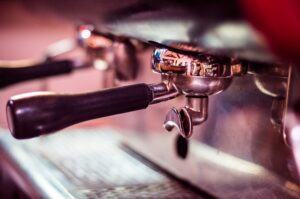
Read: Types of espresso machines
What Is A Rotary Pump Espresso Machine
Rotary pumps need a direct connection to a waterline to maintain a constant pressure. The added benefit of this type of electric pump is that they are quieter and longer lasting. Taste tests indicate that they make a better espresso shot and espresso based coffee drinks than a vibratory pump.
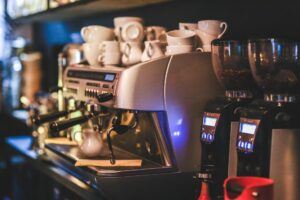
Read: How espresso machines work
How Does A Rotary Pump Espresso Machine Work?
This type of espresso machine can be either a semi-automatic machine or a fully automatic espresso machine. It functions on the principle of positive displacement.
Inside the pump is a rotor which moves and uses mechanical force to move the water and maintain water pressure. A spinning disk inside the pump housing drives the water through your espresso machine and eventually through your coffee grounds via the grouphead and your portafilter to produce your espresso shot.
What Is A Vibratory Pump Espresso Machine?
A vibratory pump espresso machine is an espresso machine that functions via an electromagnetic pump that has a piston that is attached to a small magnet that is set inside a metal coil.
An electric current passes through the coil, which then causes the magnet to move the piston in a back and forward manner, pushing water through your espresso machine.
Manual Pump Espresso Machine
Manual pump espresso machines are also referred to as piston espresso machines. This is the original way in which espressos were brewed.
As the name suggests, the barista pumps a lever to create the pressure required to make a great espresso.
Operating this kind of espresso machine takes a degree of skill, precision, focus and understanding of the brewing process. These pump driven machines are rare, very rare. You will almost never see one in a coffee shop at all.
Their demise came with improvements to the brewing process.
Manual pump machines now exist in manual lever espresso machines.
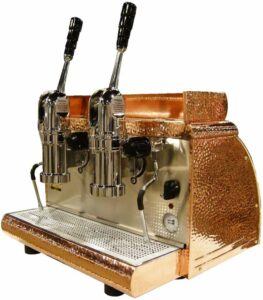
Manual Lever Espresso Machine
Lever espresso machines were introduced in 1947 and were the first machine to use high pressure to produce an espresso and not steam.
Modern spring-based lever machines work by the use of an internal spring that pushes water through your espresso grounds, your ground coffee using pressure to produce the 9 bar (130 PSI) required.
The way in which they are designed allows you as the barista to control the pre-infusion time and the volume of water that passes through your coffee grounds and when to pull the shot.
The lever and spring do not automate the pressure in the same way as a manual pump and electric pump do. It is the pulling, or rather holding action of the barista that has an effect on the water pressure and effectively alters the pressure.
It takes practice for you to get it right, and when you do, it is a matter of feeling it and getting a feel for it.
Lever machines, when you do take the time and dedication to master the process, will have you making truly excellent shots of espresso.
Some machines, due to their design, have problems with water that is too hot. Machines where the group head is separated from the boiler have the effect of the heat dissipation, which results in the brewing water having a better, more ideal temperature, a much better brewing temperature.
Lever machines also have the facility for milk steaming, just as you would expect with other machines.
Coffee lovers will insist that using a manual lever based espresso machine produces a better espresso due to having more control over the brewing process, literally complete control from water pressure to grind size and bean freshness, tamp, everything.
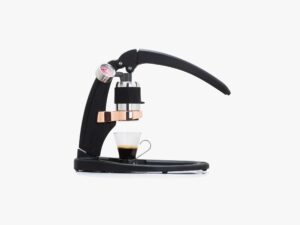
How Does A Pump Espresso Machine Work?
A piston attached to a magnet is set inside a metal coil. Electrical current runs through the coil, causing the magnet to rapidly move the piston back and forth, pushing water through the machine. Your average vibe pump clocks in at sixty pushes per second. Unlike a vibratory pump, a rotary pump is mechanical.
Do You Need A Pump For An Espresso Machine?
Yes,
To create the 9 Bars (130 PSI) of water pressure, a pump of some kind is required. There are really only a few choices that you have: an electronic rotary pump, an electronic vibratory pump or a manual lever.
The manual pump espresso machines are reasonable but lack the ability to produce 9 the 9 bars of pressure required. The same can be said of steam-powered espresso machines.
Does An Espresso Machine Need A Drain?
It is best that you have a drainage system if you make a lot of coffee. But for home use this is not necessary. A drip tray, which each espresso machine has, is more than enough for regular home use.
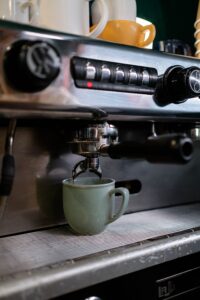
Is 15 Bar Enough For Espresso?
Yes,
15 Bars is more than enough for brewing an excellent espresso. All that is required is 9 bars (130 PSI) of pressure to get a good, thick crema on top. At a higher pressure, your espresso may turn up burnt or over extracted.
Are Spring Lever Espresso Machines Better?
It depends.
If you are willing to put in the time and effort to learn how to use a spring lever machine and understand the process of brewing great coffee, then absolutely yes, a spring lever espresso machine is more than worth it.
A spring lever espresso machine will produce a much better espresso, but this absolutely depends on your skill and knowledge as a home barista.
If you are not willing to put in that effort or simply not interested, then you are best casting your eyes in the direction of an automatic or semi-automatic espresso machine.
Do You Need Filters For Espresso Machine?
It will not harm your machine to have an extra external water filter added to your espresso machine, at the very least to ensure high quality water and less limescale and other impurities from entering your machine.
In fact, I advise that you have one installed. Most espresso machines do have a built-in water filter. Having an external one fitted as a bonus, if you can, will only improve your machine and coffee quality.
Coffee filters are not required at all as the portafilter, where you put your coffee, serves this purpose.
Should I Use Bottled Water In My Espresso Machine?
Let’s put this in the most simple of terms.
The better the quality of the water that you use to brew your coffee, the better the end result will be. Using bottled water will result in better coffee.
I recommend that you either filter your water before it enters your machine or use bottled water. In the long run, this will also function as preventative maintenance due to a vastly reduced build up of lime scale and mineral deposits.
How Often Should You Descale Your Espresso Machine?
As a routine, I suggest you give your espresso and other coffee brewing equipment a good clean at least once per week.
While others may tell you to do it once per month or once every 2 or 3 months. Coffee can attract mold and bacteria which can form in areas that you cannot see inside your machine, like the pipes.
The result of regular weekly cleaning will be better, tastier and healthier coffee. At my two coffee shops, we clean our machines twice per day. When you clean your machine, descale it also.
Cleanliness is next to godliness!
Does Distilled Water Make Better Coffee?
It depends on which coffee you are making. If you are brewing regular coffee with a pour over or drip machine, for example, then there is little benefit of using distilled water.
If you are making an espresso or espresso-based drink, then absolutely distilled water is much better than tap water.
Frequently Asked Questions About Pump Driven Espresso Machines
What Is Pump Espresso Type Machine?
Pump-driven espresso machines work using an electronic pump to move pre-heated water through the brewing chamber and a bed of finely ground coffee. Pump driven machines make it easy to achieve constant and consistent high pressure.
What Is The Difference Between Pump Espresso And Steam Espresso?
At best, steam-powered espresso machines produce a coffee that is “espresso like” and is tasty and very satisfying. They can be described as low quality coffee not much better than a moka pot. A pump espresso machine will brew a perfect shot of espresso with the rich thick crema on top similar to what you get from a coffee shop.
What Is The Best Pump For Espresso Machine?
Rotary pump espresso machines are the best type. They are more reliable and can work with a direct water line connected to the water mains or a reservoir. This is something that vibratory pumps are not capable of doing.
The drawback of a rotary pump is their size; they are much bigger and cost a lot more. But they also last a lot longer.
Is A Rotary Pump Better Than A Vibratory Pump?
Yes, a rotary pumpis better, quiet and is able to get a better quality and more consistent pressure. The also last longer and thus need to be replaced less often.
What Is The Best Form Of Espresso?
The best form of espresso in my opinion is a ristretto, which is best enjoyed as double espresso due to the small size of only 20 ml (2/3rd of an ounce). It’s an espresso that is more focused with a coffee to water ratio of 1:1.
Why Are La Marzocco So Expensive?
The brand of coffee machines, La Marzocco, are so expensive due to using a dual boiler system and the quality of the build. You can be 100% confident that these espresso makers will last you a long time.
Is Breville Or DeLonghi Better?
A DeLonghi has a better quality pump that is a little more powerful with 19 bars, which is 4 more than Breveille. Both are capable of making a true espresso with a rich crema on top. Only a DeLonghi offers a dual boiler machine which ensures temperature stability for perfect extraction and milk steaming at the same time.
In my opinion and experience, a DeLonghi is better.
How Much Should You Pay For A Good Espresso Machine?
For a good quality espresso machine between US$600 to US$800 will get you a machine that will brew you perfect coffee for many years to come, a great build quality and some handy and convenient features.
Frappé-Ing It All Up – Pump Driven Espresso Machines
Pump driven espresso machines are great and which one is best will depend on the kind of coffee person you are and how dedicated you are to making espresso base drinks.
It also depends on how many drinks you will be making at a time. Lever based manual machines are clearly better, but they also take a lot longer to make and a bit of time to master. If you are more interested in a set and forget machine, then a fully automatic machine is what you will be looking for. All you need to give serious thought to vibratory motor or rotary motor based
Join our cool coffee community and share your great coffee creations, fabulous latte art and these amazing coffee recipes.

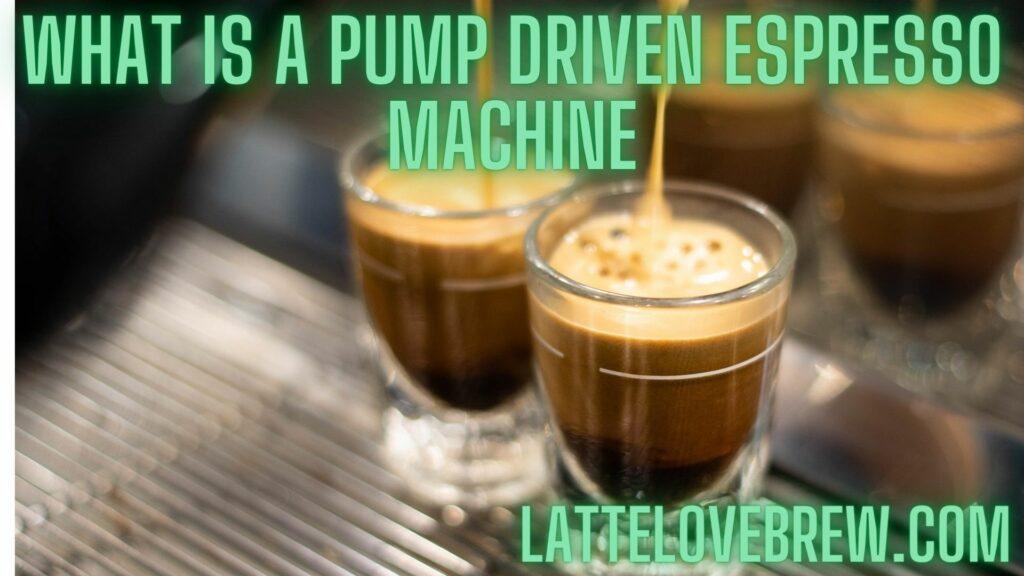
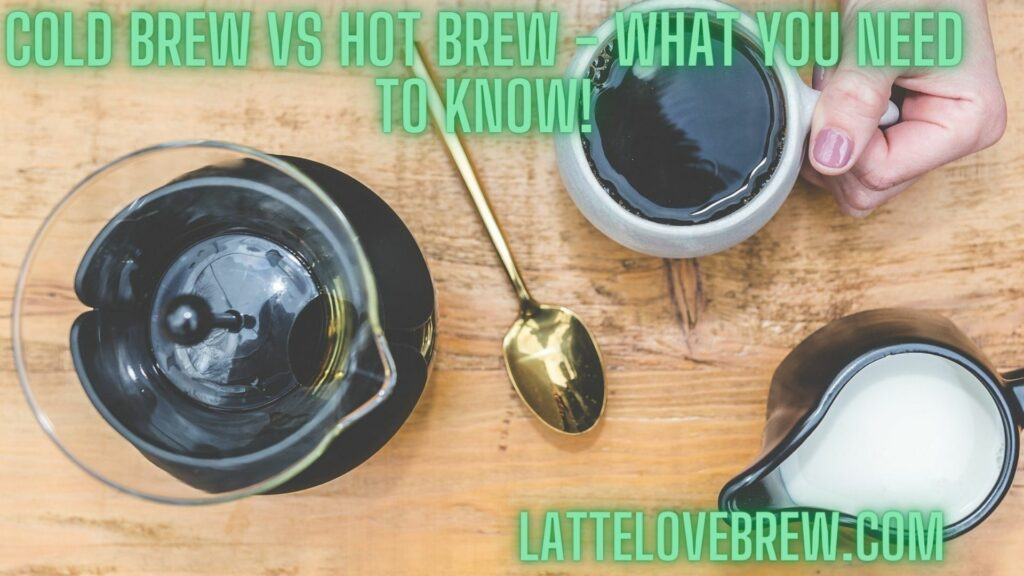
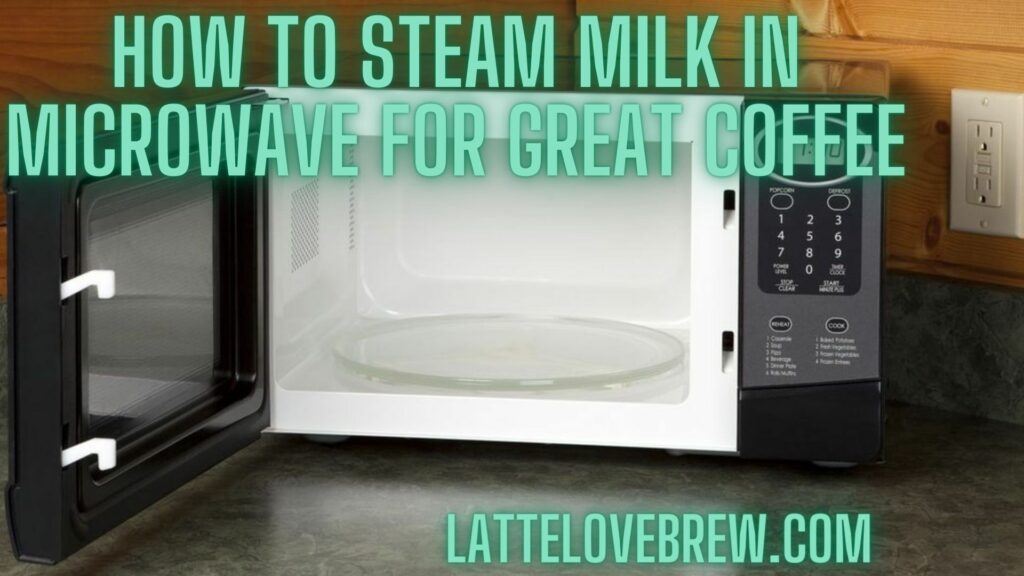

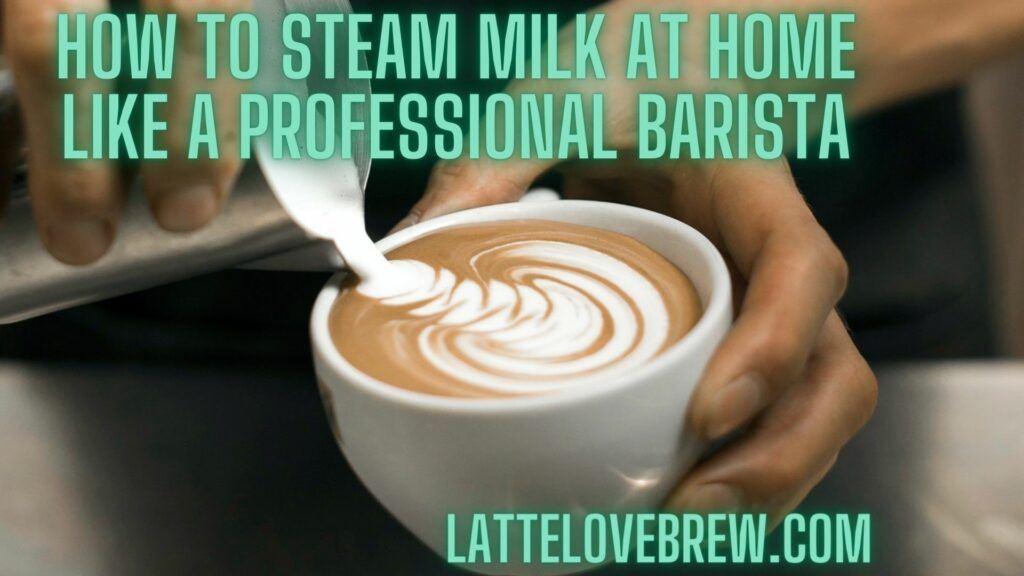
![[Recipe] How To Make Dunkin Iced Coffee At Home Like A Pro!](https://lattelovebrew.com/wp-content/uploads/2022/04/Recipe-How-To-Make-Dunkin-Iced-Coffee-At-Home-Like-A-Pro-1024x576.jpg)
